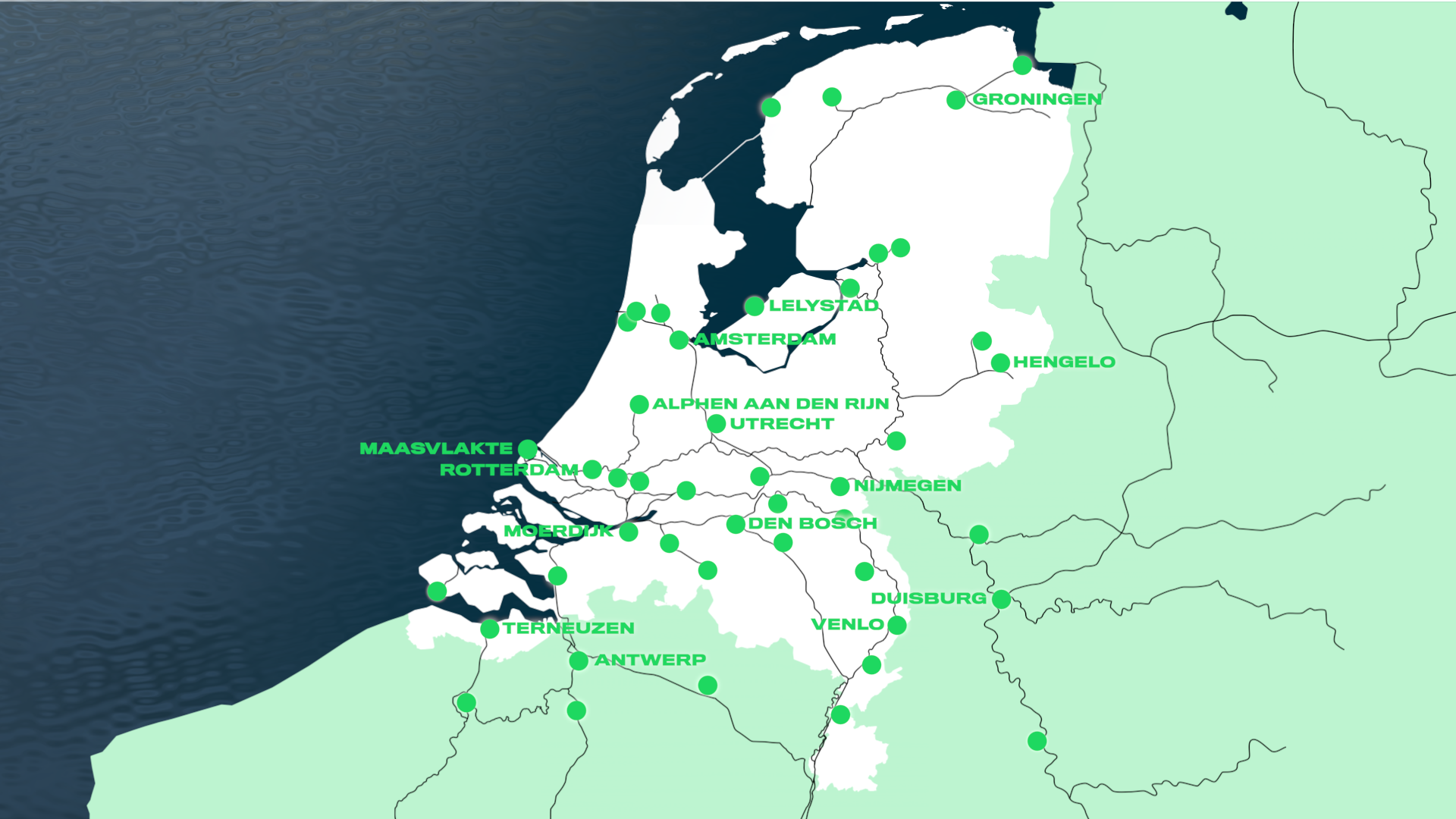The exchangeable energy containers are charged with sustainably generated power. Skippers can quickly exchange a depleted container for a full one at exchange and loading stations. These stations are equipped with an ‘open access’ network. This means that they are also suitable for the fast charging of trucks and buses. The charging stations are standardized and developed in sync with the battery containers.
More loading points
In the coming years, ZES will be ‘greening’ more changing and charging stations, more shipping routes and more ships. The ultimate goal is to make all inland shipping, and short sea shipping, green and emission-free. A network of open access loading points will be set up along the main waterways and existing logistics systems such as container terminals.
Stabilising the electricity grid
When battery containers are not on board a ship, they can be used to stabilise the electricity grid. Network stabilisation – balancing supply and demand – is essential for a reliable electricity network. In the future, the supply of electricity will fluctuate more as we make more use of solar poles and wind turbines and less use of power stations. Maintaining grid stability will increasingly be a matter for small resources such as, batteries, boilers and heat pumps. In addition, the containers can be used to meet temporary demand for electricity, for example during events or at construction sites.
Future-proof system
The system is future-proof because it is independent of an energy carrier. We will start out using batteries, but if hydrogen becomes cheaper in the future, hydrogen technology-equipped containers with will be able to supply power in the same way. The charging stations are designed to allow for synergies with other technologies, such as hydrogen.
Battery and technology
Barges power usage varies from 500 to 1000 kW. With the help of a 2000 kWh Repack container, an inland vessel can sail for two to four hours. With two ZESPacks, a distance of 50 to 100 km can be covered.
100% safe
Control systems in the container and on board ensure batteries cannot be overloaded. Cooling systems keep the temperature inside the container constant. The container itself is fire-safe thanks to insulation and the fact that it is equipped with fire extinguishing and safety systems. Even in the case of an external fire, the container remains safe!
Environment and materials
The ZESPack for this application is guaranteed to last 10 years. After 10 years, the capacity of the batteries is reduced by about 20 %. Use of the ZESPack for another 10 years is possible in numerous other applications. At the end of the lifespan, the materials can be recovered and made suitable for reuse. Due to the long service life of the ZESPack, the system saves far more in emissions than it costs to build the batteries.

